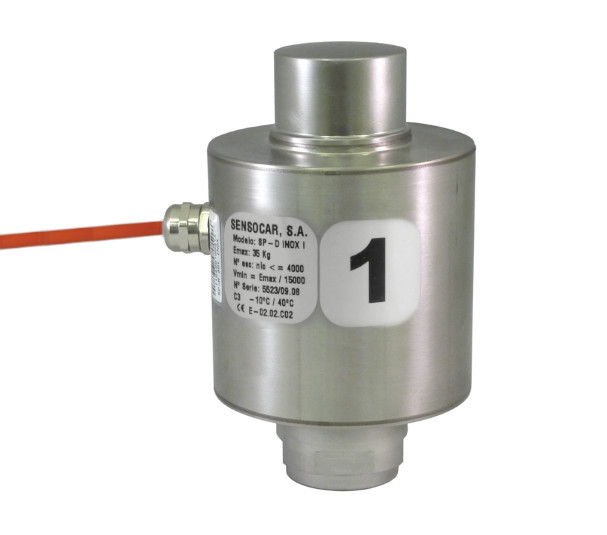Column strain gauge SP-DP Sensocar is a digital modification of strain gauge SP-A. Development and series production of the Sensocar company is carried out not far from the city of Barcelona (Republic of Spain). Demanded modifications on the Ukrainian weighing equipment market are sensors designed for a weight load of 30 tons and 40 tons.
Technical datasheet
The load cell SP-DP Sensocar is the main digital element that carries out practical weighing of vehicles that have entered the platform. When driving onto weighing platforms, road or rail transport, it creates high pressure on the surface of the platform, which distributes the weight load across all reference points. Under each reference point, manufacturers install a digital load cell.
The strain gauges on which the weighing platforms with transport are supported receive a small internal deformation. Inside the sensor housing, which is molded from stainless steel along the outer shell, there is a strain gauge that reads the pressure readings at a point, processes them and transmits them under the guise of an electronic signal.
The use of digital weight sensors is confirmed by installation in truck scales and wagon scales. Under one standard platform for weighing transport mechanisms, 4 digital load cells are installed. Under non-standard platforms, 6 sensors can be installed. Automobile scales are made from 2-4 platforms (these are 4-18 sensors). Railway scales can be made with 2, 3, 4 platforms (8-16 sensors).
In vehicle scales platform length
The SP-DP modification is made almost identical among all its modifications. The only difference is the working weighing range from 0 kg. The following indicators can be the upper limits of weighing: 10t; 15t; 20t; 25t; 30t; 35t; 40t; 50t.
The outer shell will serve for a long time in conditions of constant use of sensors. Sensors can be hidden inside the platform, or they can be located directly on the foundation of the scales. The sensor shell is a one-piece cast stainless steel sheet. Such a coating protects the sensor from the appearance of external rust, relieves electronic components and automation from street debris and dust.
The pressure from the platform falls on the top cup of the load cell. The pressure exerted on the cup is transmitted further to the strain gauge resistor of the product, which processes the pressure exerted into the value of the mass of the object. After the conversion, the technical characteristics are instantly transferred to the weight terminal, the information on which we see in the form of numbers.
where the data for each sensor are translated are converted to kilograms
- Modification DP (Digital) can be manufactured with accuracy class C4.
- Modification DP (Digital) can be manufactured with accuracy class C4.
- Modification DP (Digital) can be manufactured with accuracy class C4.
- The resistance coming out of the sensor reaches 700 ohms.
- When operating in this temperature range, the work of the load cell is correct: minimum 20 degrees of frost, maximum 40 degrees of heat. When going beyond these limits, the increase in the percentage of measurement error is allowed.
- The sensor is 15 cm high and 9 cm in diameter.
- The sensor is 15 cm high and 9 cm in diameter.





